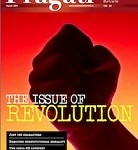Egypt has disposed of its dictator, soon after Tunisia handed out similar treatment to its own. The dizzying pace of these developments left many too shocked to comment, even as journalists scrambled to follow and write up the latest news.
A question that is making the rounds is, “Why now?” A part of the answer seems to be — to the surprise of many—social media.
The Tunisian protests were sparked by the suicide of Mohamed Bouazizi, an unemployed university graduate whose makeshift vegetable stall was shuttered by the police. The hopelessness of the economy, high level of unemployment and widespread corruption that seem to have driven Mr Bouazizi to suicide, resonated with the public. The resulting protests spread from city to city, gathering strength from the public. Tunisia’s president, Zine el-Abidine Ben Ali, tried to pacify the protesters—by ordering the security police to stop using live ammunition, cutting food prices, promising a freer media and, finally, offering new elections within six months. The masses would have none of it—Mr Ben Ali was forced to flee to Malta. He is now in Saudi Arabia, where he has been granted political refuge.
The success of the Tunisian revolution inspired the citizens of Egypt—another dictatorial regime—to take to the streets, protesting against poverty, corruption, and the autocratic rule of President Hosni Mubarak. Hundreds of thousands of protesters assembled at Tahrir Square in Cairo, which became the focal point of the uprising. Mr Mubarak too tried to pacify the protesters, promised that he would not run for another term, but insisted on staying in power till September 2011 (until the next elections), to ensure a smooth transition. The protesters were not placated, possibly due to the memory of similar false promises made in earlier years. The protests withstood the onslaught of pro-Mubarak crowds and, about 18 days after the protest started, Vice President Omar Suleiman announced that Mr Mubarak had stepped down and that he had handed power to the army.
Social media as the new weapon
Media experts have been quick to emphasise the role played by social media in the two uprisings. Recent years have seen a massive rise in the adoption of social networking and online publishing tools such as Facebook, Twitter, Yfrog, and YouTube. They have helped put the power of words, visuals and sound into the hands of ordinary people, allowing them to raise issues of concern and engage in citizen journalism—even as they drop in a note about what they had for breakfast.
The protesters in both Tunisia and Egypt extensively used Twitter, Facebook and other tools to mobilise and broadcast events to the rest of the world. While some commentators have attributed the success of the protests to the power and reach of social media, calling the revolt in Tunisia the “Twitter Revolution”, others have taken a more cautious stand. The specifics may vary, but there is no denying that the successful protests in Egypt and Tunisia have been tremendously bolstered by the use of social media.
In Egypt, the protesters used Twitter and Facebook to inform supporters about plans to assemble at various public squares, raise public morale, as well as to inform contacts in other countries of happenings in Cairo. Mr Mubarak unwisely tried to rein in the surge of online activism by unplugging Egypt from the internet, but this step only served to infuriate the citizens. To counter this crackdown, engineers from Google, Twitter and SpeakNow devised a solution that allowed tweets to be made via voicemail. Named “Speak To Tweet”, it was used to post over 3,200 tweets in the last two weeks. Another service, “Alive in Egypt”, proceeded to transcribe and translate the voice-mail tweets. There was similar but less dramatic online coverage during the Tunisian revolution.
Where does this go?
The “Twitter revolution” has two important connotations. The first is the straightforward claim that Twitter, and by extension, other social networking services, were the major players in the course of the events that unfolded. Doubtless, social media had a crucial role to play, but to brand the movement as the “Twitter Revolution” is excessive—after all, these revolutions were initiated by disillusioned, disenfranchised citizens, and were several years in the making.
The second, more subtle, association is between the demography of the protesters, and their association with the online world. A casual observation shows that majority of the protesters were youth who didn’t have much opportunity for progress, and, incidentally, were familiar with the internet. The internet contributed to the views of the youth, who were introduced to the power and potential of a democracy through news and sharing from other countries on the Web. This association appears to withstand scrutiny.
India is no stranger to internet censorship, albeit not at the level as seen in countries such as China and those in the Middle East. Over the years the Indian government, through the Department of Telecommunications, has tried to regulate access to online material and discussion forums for various reasons—and often at a moment’s notice. Continuing this practice without grounding it with a coherent policy framework would have the adverse effect of alienating tech-savvy citizens. It will also act as a means to announce that the government stifles free speech and, in the process, “showcases” its belief in the archaic policy that internet censorship is a viable means of control. If the recent events are anything to go by, it should be clear that internet censorship does not work.
The government should instead use the internet as a medium to publicise its viewpoint on issues under debate, and even use it as a propaganda tool. Information warfare is not always about subversion—it can well be used for persuasion.
This article was originally published by Pragati. You can read the rest of the article here.
You can read exclusive content from Gateway House: Indian Council on Global Relations, here.
Copyright © 2011 by Pragati.


